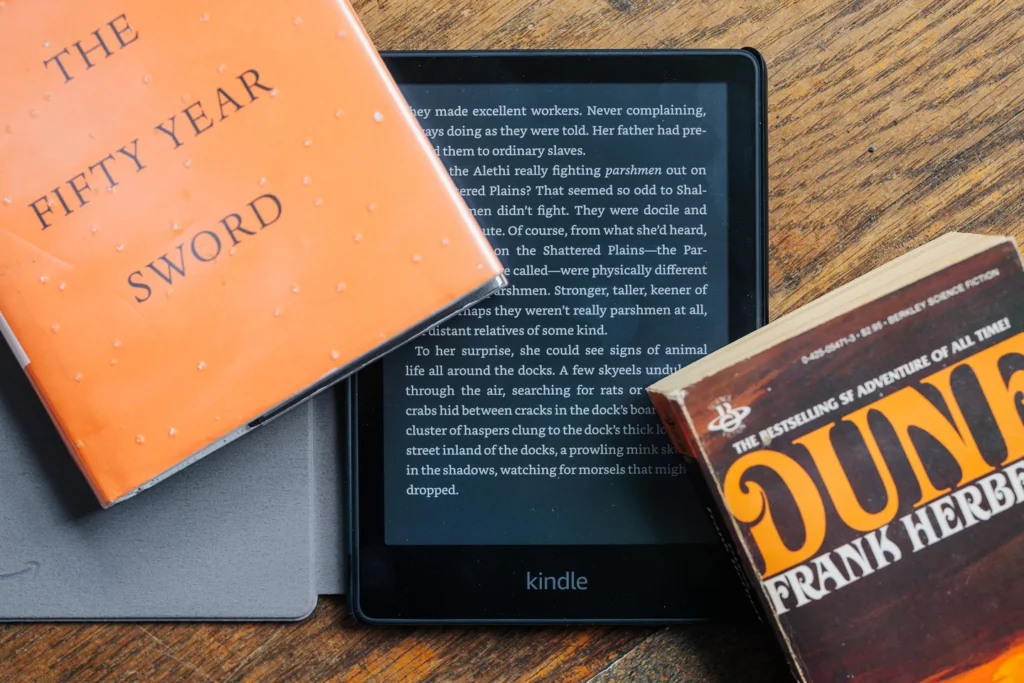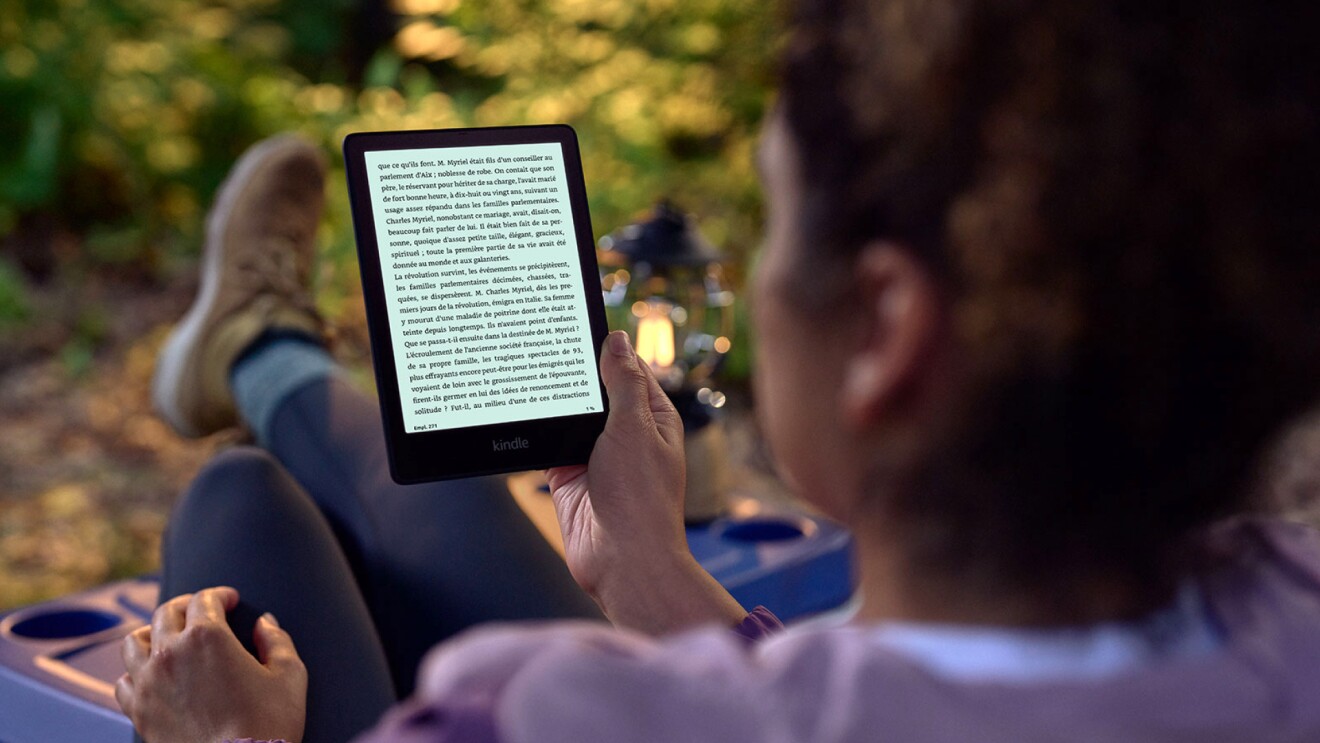Email:
[email protected]
Personal Choice by Annie Proulx
As Annie Proulx, the author behind the Book-Website, I’ve had the opportunity to explore various e-readers extensively, but my personal preference leans decidedly towards the Kindle. My fondness for Kindle isn’t arbitrary; it’s rooted in the device’s unparalleled user experience and its expansive ecosystem. The Kindle offers a seamless integration with Amazon’s vast library, making it incredibly easy for me to access and discover new titles and classics alike. The reading experience on a Kindle is exceptionally comfortable, thanks to its adjustable light settings and the crispness of its e-ink display, which closely mimics the feel of reading a traditional book without the strain on my eyes. Furthermore, the Kindle’s battery life is astonishing, allowing me to read for weeks on a single charge, a convenience that suits my often nomadic lifestyle. As an author, I also appreciate the Kindle’s features like X-Ray, which offers readers deeper insights into the work, enhancing the connection between author and audience. For these reasons, Kindle stands out as the best choice for me, blending technological innovation with a deep respect for the literary experience.
Nook vs Kindle: Introduction
The e-reader market has seen significant evolution, offering book enthusiasts a digital alternative to traditional reading. Among the myriad options, two major contenders stand out: the Nook by Barnes & Noble and the Kindle by Amazon. Each brings unique features and a dedicated ecosystem, making the choice between them not just about hardware, but also about the reading experience they offer. This article aims to dissect the Nook vs Kindle debate, offering a detailed comparison to help you decide which e-reader suits your preferences best. Whether you prioritize battery life, book selection, or device ergonomics, understanding the nuances of Kindle vs Nook will empower you to make an informed choice.
Nook vs Kindle: History and Brand Overview
The rivalry between Nook and Kindle traces back to their inception, marking a significant chapter in the digital reading revolution. The Kindle, launched by Amazon in 2007, quickly became synonymous with e-reading, pioneering the market with its innovative technology. In contrast, Barnes & Noble introduced the Nook in 2009, positioning it as a formidable competitor with unique features aimed at enhancing the reading experience. This Nook vs Kindle competition has spurred continuous advancements in e-reader technology, shaping the way we access and enjoy literature. Both brands have evolved, reflecting their parent companies’ broader strategies in the digital and retail landscapes. Understanding the history and brand philosophies of Kindle vs Nook is essential for anyone navigating the e-reader market, offering insights into each device’s potential impact on their reading habits.

Nook vs Kindle: Design and Build Quality
When comparing the Nook vs Kindle PaperWhite, particularly focusing on the Kindle Paperwhite, design and build quality are pivotal factors. Both e-readers are crafted to offer comfort and durability, yet they approach design with different philosophies. The Kindle Paperwhite is renowned for its sleek, lightweight form factor and an ergonomic design that makes prolonged reading sessions a breeze. On the other hand, Nook devices emphasize a robust build and often incorporate design elements aimed at enhancing grip and comfort. In terms of display technologies, both brands utilize E Ink screens, but Kindle’s Paperwhite technology is often highlighted for its crisp, glare-free visibility even in bright sunlight. This comparison of Kindle vs Nook in design, build quality, and display technology reveals a keen competition to cater to avid readers’ preferences, each with its merits and appeal.
Nook vs Kindle: Ecosystem and Library
In the realm of digital reading, the ecosystem and library accessible through your device are crucial. The battle of Nook vs Kindle Paperwhite extends into their respective stores, with Amazon’s Kindle Store and Barnes & Noble’s Nook Store vying for readers’ loyalty. Amazon’s Kindle Store boasts an expansive collection of titles, including books, magazines, and newspapers, complemented by exclusive deals and the Kindle Unlimited subscription service, offering vast reading material for a monthly fee. Conversely, the Nook Store also offers a wide range of titles, including exclusives and competitive deals, though it lacks an equivalent to Kindle Unlimited. This comparison of Kindle vs Nook in terms of ecosystem and library highlights the strengths each platform brings to avid readers, with Amazon leading in subscription services and Barnes & Noble focusing on a diverse catalog.
Nook vs Kindle: User Interface and Reading Experience
In the Kindle vs Nook showdown, the user interface and reading experience play pivotal roles. Kindle devices are celebrated for their intuitive interface, ease of navigation, and innovative features like X-Ray, which allows users to explore the bones of the book, such as character bios and glossary terms, enhancing comprehension and engagement. Nook counters with its own set of advantages, including customizable reading enhancements like font adjustments, themes, and accessibility features that tailor the reading experience to individual preferences. Nook’s LendMe feature also stands out, allowing users to share eligible eBooks with friends. This comparison highlights how both Kindle and Nook cater to diverse reader needs, offering unique benefits that enrich the digital reading experience.

Nook vs Kindle: Battery Life and Storage
In evaluating Nook vs Kindle, battery life and storage capacity are crucial factors for avid readers. Kindle devices, particularly the Paperwhite model, are known for their long-lasting battery life, which can span weeks on a single charge under typical reading conditions. Nook devices also offer impressive battery longevity, ensuring readers can enjoy their favorite books without frequent recharging. When it comes to storage, Kindles boast substantial internal capacities, sufficient for thousands of books, with some models offering expandable storage options. Similarly, Nook e-readers provide generous internal storage, with select models supporting microSD cards for additional space. This comparison underscores both brands’ commitment to meeting the needs of book enthusiasts, with each offering strengths in battery life and storage options in the Kindle vs Nook debate.
Nook vs Kindle: Connectivity and Extras
In the digital reading arena, the Nook vs Kindle debate extends into connectivity and additional features, crucial aspects for modern readers. Both e-readers offer robust Wi-Fi capabilities, with Kindle taking a slight lead by also providing cellular options on select models, allowing for book downloads without a Wi-Fi connection. When it comes to extras, Kindle devices shine with seamless integration with Audible for audiobook listening and a waterproof design on certain models, enhancing their usability in various environments. Nook counters with its compatibility with public library eBooks, offering a cost-effective way to read more. Although both platforms excel in making reading accessible and enjoyable, the Kindle vs Nook comparison reveals Kindle’s slight edge in connectivity options and extra features, catering to a broader range of reader preferences and lifestyles.
Nook vs Kindle: Price and Value
When deliberating Nook vs Kindle, the price and overall value proposition are critical considerations for consumers. Kindle e-readers present a range of price points, from the affordable basic model to the premium Oasis, catering to various budgets and reading preferences. Nook devices, while competitive, often focus on providing value through their integration with Barnes & Noble’s extensive physical and digital library. In evaluating the overall value, one must consider not just the upfront cost of the device but also the long-term expenses associated with purchasing books, potential subscription services, and the longevity of the e-reader. Kindle’s ecosystem, with features like Kindle Unlimited, may offer more for a voracious reader despite a higher initial cost, while Nook’s offerings are compelling for those loyal to Barnes & Noble’s library. This comparison of Kindle vs Nook highlights the importance of aligning one’s reading habits and preferences with the features and financial commitment each platform entails.
Nook vs Kindle: Pros and Cons Summary
In summarizing the Nook vs Kindle debate, it’s clear that each platform has its unique advantages and drawbacks. Kindle e-readers are celebrated for their extensive ecosystem, including a vast library, Kindle Unlimited subscription service, and seamless Audible integration, making them ideal for avid readers seeking variety and convenience. However, they can come with a higher price tag and a focus on Amazon’s ecosystem, which might not suit everyone’s preferences. On the flip side, Nook devices excel in user-friendly design and direct access to Barnes & Noble’s content, offering a substantial library and compatibility with public library eBooks. They might fall short in terms of advanced features like cellular connectivity and waterproof models. This Kindle vs Nook comparison reveals that the best choice depends on individual reading habits, budget considerations, and brand loyalty, with each offering distinct benefits to enhance the digital reading experience.
Nook vs Kindle: Conclusion and Recommendation
In concluding the Nook vs Kindle comparison, it’s evident that the choice between these e-readers hinges on personal preferences and reading habits. For avid readers who devour books across genres and formats, Kindle’s expansive ecosystem, including Kindle Unlimited and Audible integration, offers unmatched value. It’s a powerful tool for those who also enjoy audiobooks alongside traditional reading. On the other hand, the Nook is an excellent choice for budget-conscious buyers and those loyal to Barnes & Noble’s catalog, offering a straightforward, user-friendly reading experience with easy access to a wide range of titles, including those from public libraries.
Ultimately, the decision in the Kindle vs Nook debate should reflect your specific needs: Kindle for a comprehensive, feature-rich reading experience and Nook for its simplicity and direct connection to Barnes & Noble’s offerings. Each e-reader has its strengths, making them suitable for different types of users in the vast landscape of digital reading.
FAQ Section
Can I access books purchased on one platform on another device (e.g., Kindle books on Nook)?
When considering Nook vs Kindle, it’s important to understand that each platform uses its own format and ecosystem for digital content. Kindle eBooks are designed to be read on Kindle devices or through Amazon’s Kindle app available on various devices. Similarly, Nook books are formatted for the Nook ecosystem. Due to DRM (Digital Rights Management) and format differences, transferring purchased books directly between a Kindle and a Nook device is not straightforward. However, there are tools and methods for converting eBooks into compatible formats, though users should be aware of copyright laws and restrictions.
Are Kindle and Nook devices usable outside of the United States?
International use is a common consideration in the Nook vs Kindle debate. Kindle devices support international use, with Amazon offering specific versions of Kindle e-readers that can download books in over 100 countries. Additionally, Kindle users can purchase eBooks from Amazon’s global websites, depending on their account settings. On the other hand, Nook devices, offered by Barnes & Noble, have more limited international functionality primarily due to the availability of the Nook Store and content licensing agreements. It’s advisable for international users to check compatibility and available services in their country before purchasing.
What kind of customer support can I expect with Kindle and Nook devices?
Customer support is a crucial factor when comparing Nook vs Kindle. Amazon provides extensive customer support for Kindle users, including help pages, forums, live chat, email, and phone support, ensuring that users can find assistance for any issue. Kindle’s widespread use also means there’s a large community of users online who can offer advice and solutions. Barnes & Noble also offers support for Nook devices through their customer service channels, including in-store assistance at Barnes & Noble locations, which can be a significant advantage for users who prefer face-to-face help. Both companies strive to address and resolve any issues with their devices, ensuring a positive user experience.

